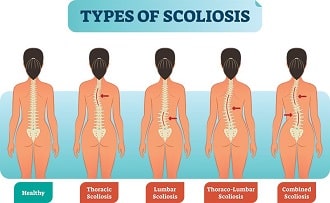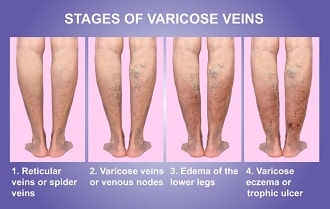Rebounding or trampoline jumping is an all-around full-body exercise. It develops the cardiovascular system, burns extra fat, relieves stress, stimulates lymph flow to fight off deadly diseases, and many more. Besides lots of benefits, trampolines may prone to some risks like other exercise equipment.
You may experience negative side effects of rebounding if you have previous back pain, osteoporosis, scoliosis, joint pain, etc. Bouncing on trampolines creates sudden ‘compression’ and ‘tension’ on tissues that might deteriorate the condition. And this could be dangerous if you continue rebounding in such unstable health minefields.
Note: The objective of this article is not to discourage our readers to avoid rebounding. It's only written as a safety guide so you can refrain from rebounding while suffering from the mentioned critical health problems.
Can Rebounding Be Bad for You?

- Any form of exercise has some risks, and rebounding is no exception. Studies show that different trampoline-related injuries are taken place every year. Sprains, contusions, and strains are some of the most common ones.
- Improper landing on a trampoline or rebounder is another reason that could be harmful to rebounding exercise.
- Moreover, if you have any previous pain or injury, there is a high chance of prolonging it. The reckless bounce is the main reason for rebounding injuries. So, it’s important to follow the safety rules to avoid injury rates to a great extent.
If you are looking for a low-impact workout rebounder, you can choose The following section will explain the different negative impacts of rebounding exercises on various parts of our body.
Different Negative Side Effects of Rebounding Explained
1. Is Jumping on Trampoline Bad for Pelvic Floor?
The pelvic floor is an essential part of human anatomy. But, women’s pelvic floor is more important and their pelvic cavity is larger than men’s. It supports our bladder, intestines, and uterus (in females). On top of that, the pelvic floor helps to control over bladder and intestine movement (continence).
Do you know how does rebounding negatively affects your pelvic floor? For women, how severe the injury will depend on several factors such as the strength of the pelvic floor muscles, childbirth history, weight, constipation, and previous conditions and treatment.
If you plan to jump on the trampoline having a weak or painful pelvic floor, it is recommended to avoid straining it. Moreover, you can adjust your workout routine to reduce impact.
The first thing is to land on a single foot rather than both feet. One leg land will help you control pelvic floor problems. Studies show that female trampolinists experience higher risks of pelvic floor injuries for heavy impacts of the trampoline.
See Also: Is rebounding okay during period?
2. Is Rebounding Bad for the Back?
The straight answer is, trampolining is not bad for your back if your back doesn’t have any previous pain. But, if you have been suffering from sciatica, pinched nerves, or osteoporosis, rebounding could be bad for you.

When you bounce on trampolines, your spinal tissues run under continuous tension and compression. This results in overstressing the joints; thus, the pressure on disks increases. Disks are found between each and every vertebra in the spine. The more you jump, the more pressure will be generated on discs.
3. Can Rebounding Be Bad for Ankles?
Another reason for ankle pain could happen when you jump too high or jump for long. So, you should avoid such bad products to protect your ankle and lower parts of the body. Finally, incorrect posture while landing could be a possible reason for sprained ankles.
See Also: How many calories does trampolining burn?
4. Is Rebounding Bad for Your Knees or Joints?
Is a mini-trampoline good for bad knees? Rebounding is a low-impact exercise that won’t hurt your knees. Nevertheless, it is beneficial for your knees, even if you have arthritis. But trampoline bounce could be really bad for knees or joints in certain situations.
Firstly, you need a good-quality rebounder for knee and joint-friendly workouts. But, poorly made rebounders might have some negative actions on our knees.
Another possible reason could be your wrong posture while landing. Even though the rebounder is soft and made ergonomically but this will exert a minimal jerk on your body.
5. Can I Rebound on a Trampoline with Osteoporosis?
Osteoporosis is a critical health condition that is mainly caused by dropping the estrogen levels of your body. This weakens your bones which are prone to unexpected and sudden bone fractures. It develops slowly years after years.
Osteoporosis limits your movements due to the high risk of breaking the bone. That being said, heavy impacts might be dangerous. Thus, you should avoid such kinds of physical activities as running, riding, or jumping. So, rebounding is not safe at that time.
If you are diagnosed with osteoporosis, your doctors or therapists will recommend better which exercise is suitable for you depending on your situation. Some good exercises at that time are standing on one leg, brisk walking, etc.
6. Is Bouncing on Rebounder Bad for Scoliosis?

Scoliosis is a common back problem that results in curves and twists of the spine. It can affect people of any age, from infants to adults, but it is usually started in children between 10 to 15 years old. For adults and seniors, the problem is residual in most cases, as it developed in their childhood.
The severity of scoliosis varies from one person to another. So, before deciding whether you should continue rebounding or refrain from it, consider some factors like the age of the patients, deformation, and age. And most importantly, consider what your doctor says.
Read Also: Is trampoline parks dangerous?
7. Is Jumping on Trampoline Bad for Prolapse?
That being said, don’t go for rebounding while you’re suffering from prolapse. But, you can consult with doctors or therapists to get a more specific answer as they instruct better on how severe your prolapse is and what should you do now.
See Also: Rebounding routine
8. Can I Rebound with Degenerative Disc Disease?
If you feel pain due to damage to these disks, this is considered degenerative disk disease. In that condition, discs can’t tolerate stresses and sudden impact. So, it’s recommended not to bounce on the trampoline, then.
See Also: Can trampoline help you gain height?
9. Is Trampoline Jumping Bad for Bladder?
As you jump on the rebounder, the pressure increase on the pelvic floor until it can’t hold the bladder weight. What will happen next, you might imagine?
For healthy persons, rebounding doesn’t affect on bladder negatively. But those who are diagnosed with urinary zone problems should have extra care. That being said, never jump on the trampoline with a full bladder. Also, consider the intensity of the exercise. Start with warming ups and then go with your exercises.
The video below explains how can you stop urinary leakage while jumping.
10. Is Rebounding Provoke Different Injuries?
Several common trampoline injuries are bruises, ankle sprain, strain, broken arm, cuts, dislocations, and more. But you can extend trampoline safety following the safety rules.
11. Can You Rebound with Nerve Damage?
12. Is Rebounding Safe for Hypertension?
Aerobic exercise is a great way to reduce blood pressure. Trampolining is a good cardiovascular workout that raises the heart rate. But, improved heart rate might be dangerous for people with hypertension.
So, when the heart rate rises due to rebounding, extra stress will be generated on your heart muscle which could be very critical. Thus, it’s recommended to avoid intense workouts if you’re suffering from hypertension.
13. Is Trampolining Bad for Varicose Veins?

Truly, regular trampolining is helpful for increasing circulation that won’t pool on veins. But, high blood flow can lessen or even hinder circulation through varicose veins.
14. Can You Bounce on Trampoline with Headache?
In general, trampolines or rebounders don’t cause headaches. Still, you might experience it occasionally, especially, when you use a new trampoline. Some possible reasons for trampoline headaches are too much stress on the neck, incorrect landing, dehydration, lack of sleep, and so on.
If you jump on a trampoline with a headache, the gravitational jumps could prolong it. So, you should avoid rebounding from previous headaches.
See Also: Does rebounding before bed good for sleep?
15. Is It Safe to Rebound with Back Muscle Imbalances?
16. Can I Rebound with Dizziness?
Dizziness might be a result of dehydration, low blood sugar, inner ear problems, and many more. It’s wise to avoid the trampoline when you are feeling dizzy, as sensitive movements or high-intensity rebounding can rise dizziness.
17. Is Rebounding Bad for Your Organs?
18. Is Trampolining Safe for Your Brain?
Like most other exercises, rebounding helps to improve your gross motor skill. When you jump on the trampoline, different parts of the body move together, thus helping to work your brain well. But if you are diagnosed with any brain disease before, consult with your doctor prior to jumping on the trampoline.
19. Is Trampoline Therapy Bad?
In general, rebound therapy isn’t bad for autism or sensory disorders. In fact, trampoline therapy provides great benefits. But you can consult a physical therapist to know more it is really good or bad for you.
20. Should I Rebound on Trampoline with Weak Bones?
21. Is Rebounding Bad for Lymphedema?
22. Is It Safe to Jump on Trampoline During Pregnancy?
23. Can I Rebound with Plantar Fasciitis?
Plantar fasciitis causes inflammation in the bottom of the foot near the heel and arch. When you rebound on the trampoline, the stabbed pain of plantar fasciitis starts to improve. For better benefit, you should rebound barefoot.
24. Is Rebounding Safe with Neck Issues?
25. Is Trampolining Bad for Your Breasts?
Ladies! You should be careful while jumping on a trampoline or rebounder. As this could cause breasts to be saggy if the breasts aren’t supported well.
You should wear the necessary wearing, including a sports bra to keep your breasts tight. Otherwise, breasts may sag due to repetitive jumping.
26. Can Rebounding Be Bad for Hips?
The hip joint plays a significant role in shock absorption when you land after jumping. Research shows rebounding decreases the hip joint’s participation in energy absorption during trampoline jump landing.
27. Is It Safe to Use Trampoline If I Have Cancer?
Tips to Reduce Cons of Rebounding
See Also: Trampoline front and back flip
Tips to Use Mini Trampoline Safely and Effectively
Frequently Asked Questions
Final Thoughts

Rebecca is a fitness nerd and mother. She was inspired to get into the world of trampolining and rebounding by her husband Robert, who is a well-respected trainer and expert in the field. Now she instructs children, mothers, and teens the basic trampolining and rebounding tricks.
Rebecca is also a passionate blogger, sharing her knowledge and experiences with others in the hope of encouraging them to give trampolining and rebounding a try.
